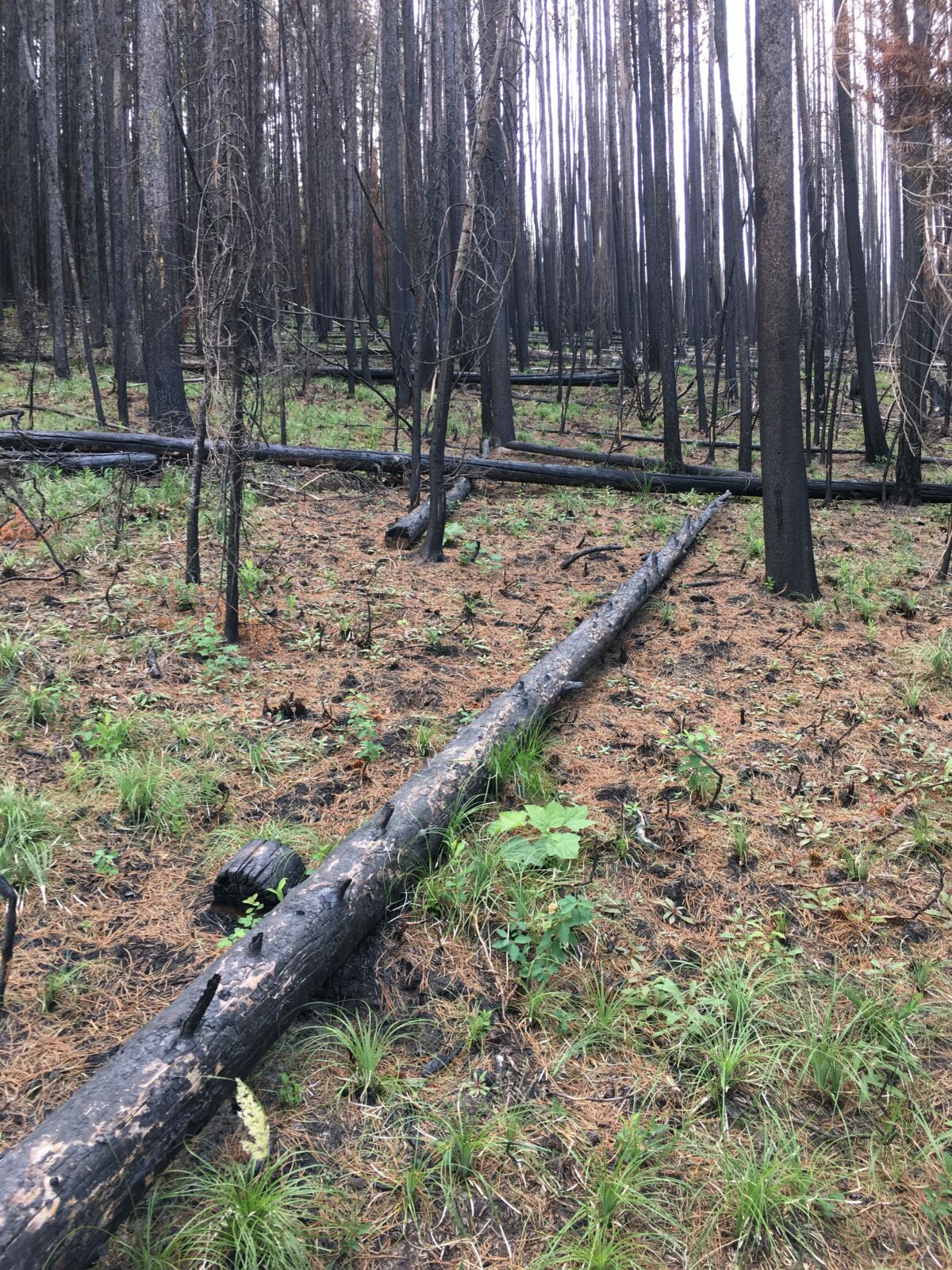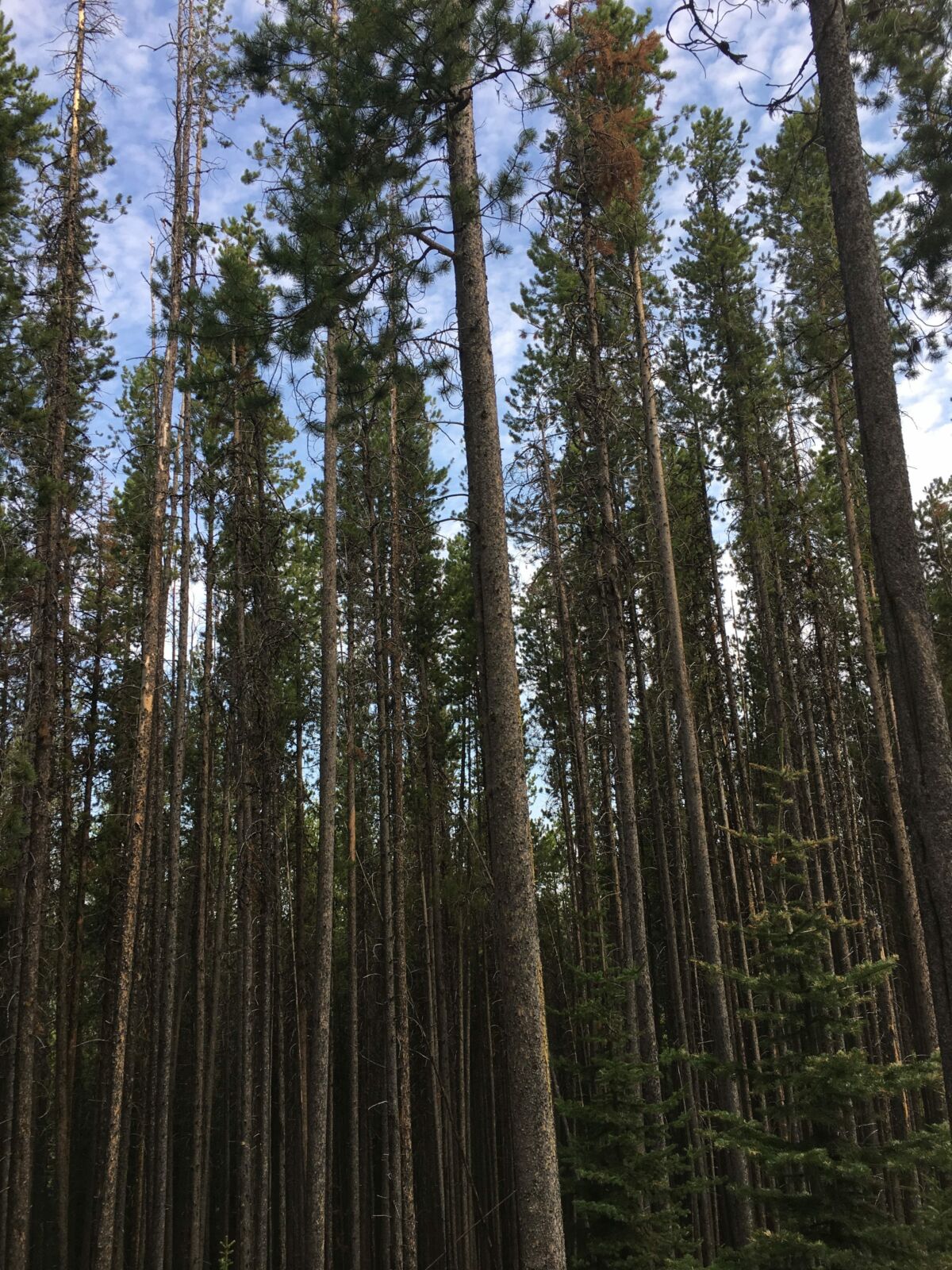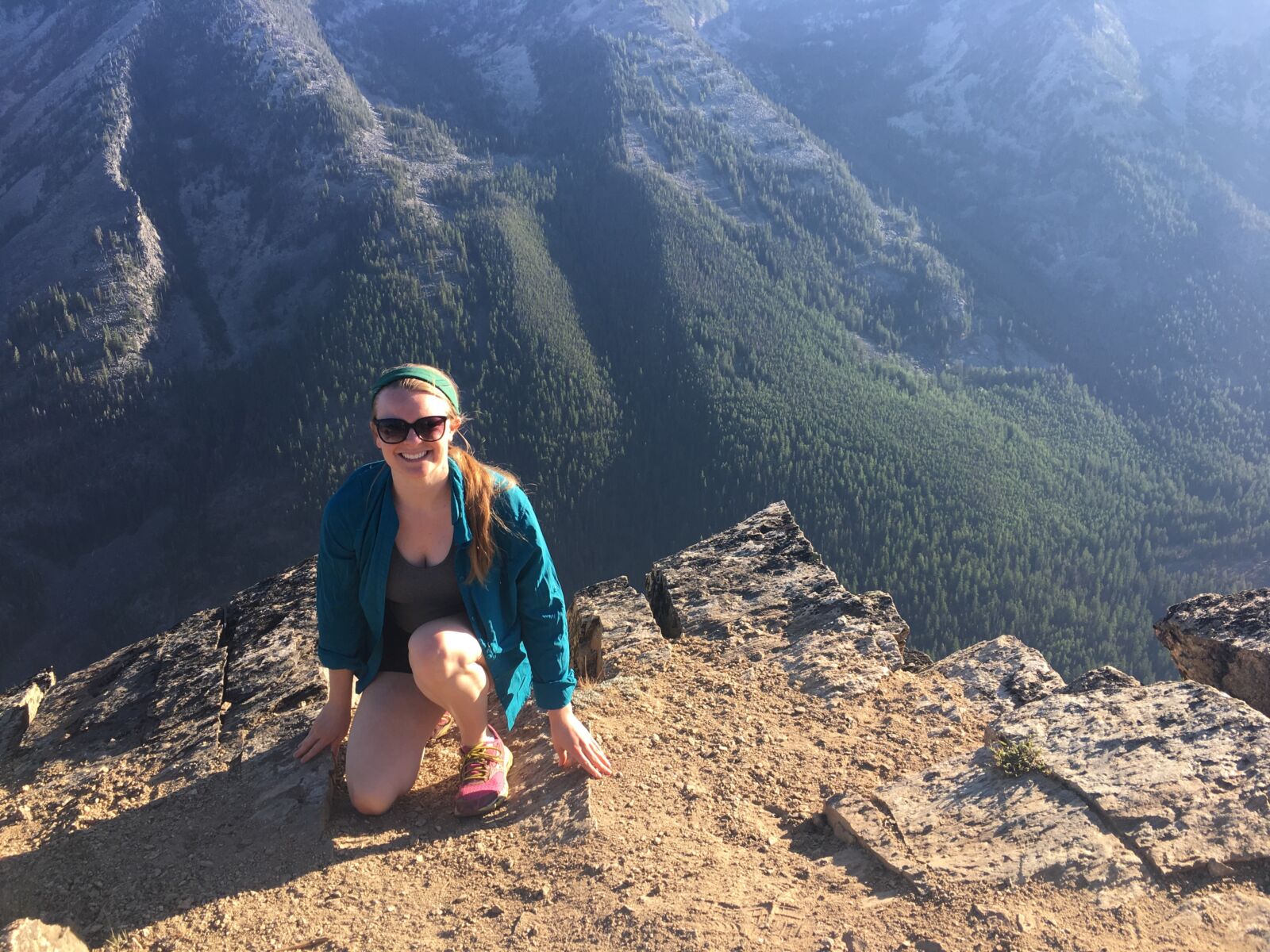To be honest, before I started my internship with the National Forest Foundation and the USDA Forest Service I did not know that National Parks and National Forests were different entities. I have been to numerous National Parks, but I’ve never been out on a National Forest. At least, that was the case until last week. This August, near the end of my internship in DC, I had the chance to fly out to Missoula, Montana to visit the National Forest Foundation (NFF) headquarters and experience our National Forests for the very first time.
My first adventure included visiting burn sites on the Lolo National Forest with two NFF co-workers, Wes and Hannah. In 2017, the Forest was devastated by the Lolo Peak Fire, and there was something eerie about seeing the aftermath. Huge pines, that from a distance seemed so powerful, had been burned like logs in a campfire. Their bark crumbled under my touch when I went to examine them. Countless trees were strewn across the side of the mountain like charred pick-up sticks. However, others better withstood the wildfire and only had minimal burns at the base of their trunks.

Although this location looked grim, there were other areas nearby that had not recovered as well—and probably will not without the help of our tree planting efforts. I was told that forests on the southern and western facing mountainsides have a tougher time recovering after wildfire. This is due to more intense sunshine, making conditions too warm and dry. Thus, it’s more difficult for trees to regrow in these locations without the help from reforestation efforts.
Despite the desolate appearance, wildfire can be beneficial to some forest ecosystems. Many tree species need fire in order for seed dispersal. Serotinous cones are sealed shut and need high temperatures to be opened—temperatures that can only be reached by fires. I learned that fire can be devastating and destructive, but it can also bring new life and growth.

After the fire ecology excursion, we headed west to explore the Nez Perce-Clearwater National Forest in Idaho. This Forest was lush and green: spruces, lodgepole pines, and subalpine firs covered the landscape. The natural vibrancy was a stark contrast to the environment in DC (where my internship was located), as well as the burnt ladscape I had just experienced on the Lolo.
The Nez Perce-Clearwater National Forest was not only insanely beautiful, but also rich with culture and history. The Lolo Pass Visitor’s Center detailed the history of people who had inhabited and traveled through the Forest. There were sobering reminders of our nation’s dark past and the unfair treatment of the Nez Perce, as well as accounts from Lewis and Clark’s travels to the west coast—a journey that could not have happened without the help from tribes.
While the visitor’s center was informative, I was excited to get out on the National Forest to explore. We took a quick walk to visit the site of one of Lewis and Clark’s camps, and although it was short, I got to witness how gorgeous our National Forests are. Around me stood tall trees and dainty wildflowers. The sun felt warm, the air was crisp, and Colombian ground squirrels scurried across pathways. As quickly as the walk started, it ended and we headed back to NFF headquarters at Fort Missoula to finish up the work day.
Luckily, my National Forest adventures did not end there! Later that evening, my co-worker and Demmer Scholar alum, Zoe, took me out to the Bitterroot National Forest to experience the endless recreational opportunities that our National Forests offer. For us that meant going on the Bear Creek Overlook Trail, a five mile hike that ends at an incredible, mountainous overlook. To the West we could see the vast Selway-Bitterroot wilderness and to the East I saw the Bitterroot Valley speckled with homes. Standing near the edge of a cliff, despite being a bit nerve-wracking, summed up my trip to Montana and the three National Forests perfectly—it was thrilling!


